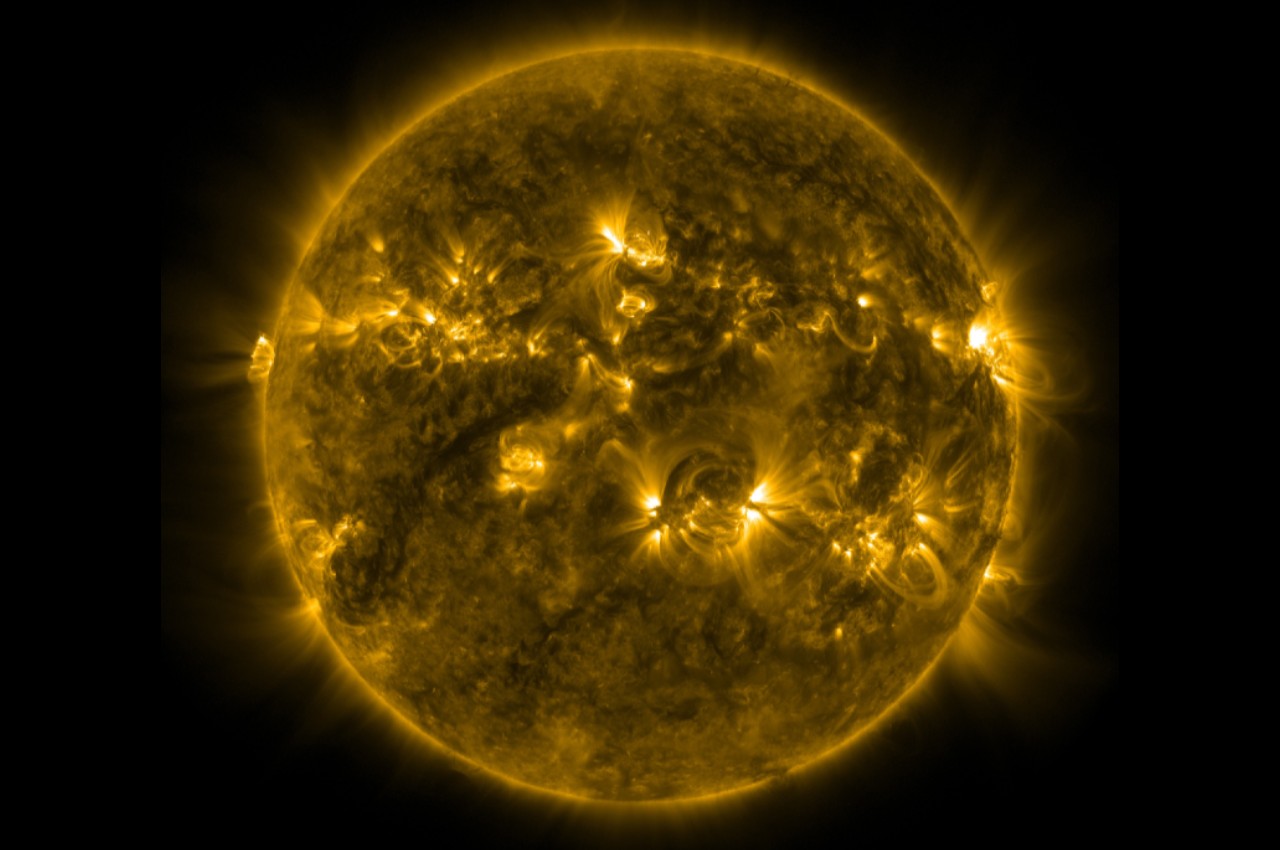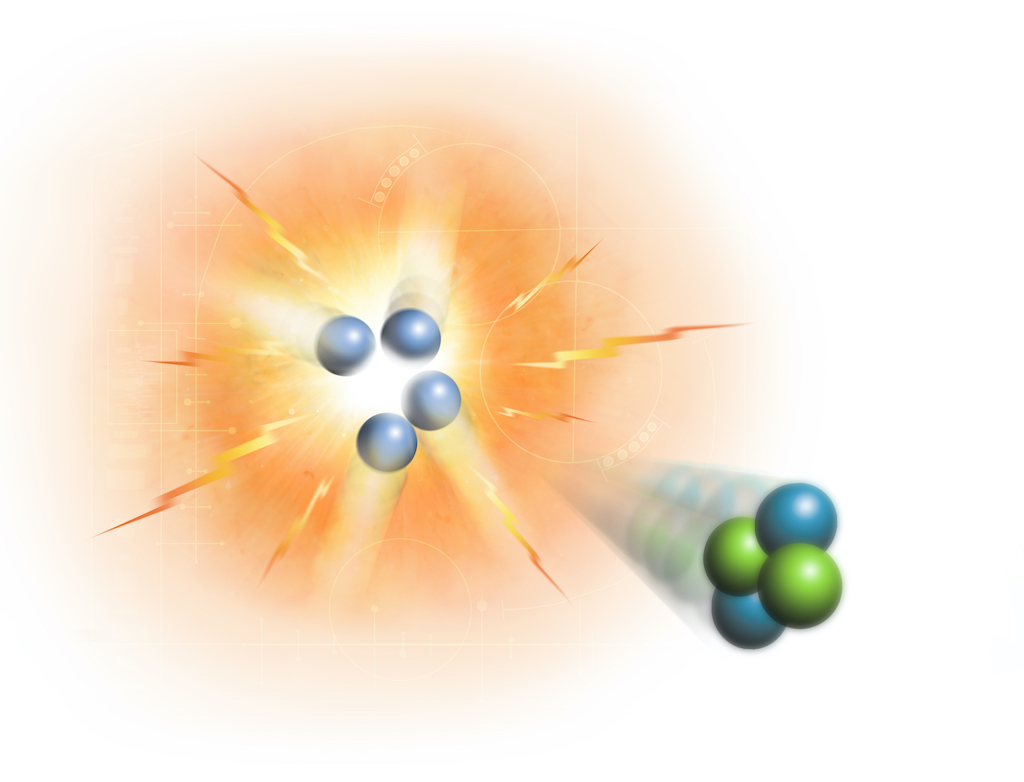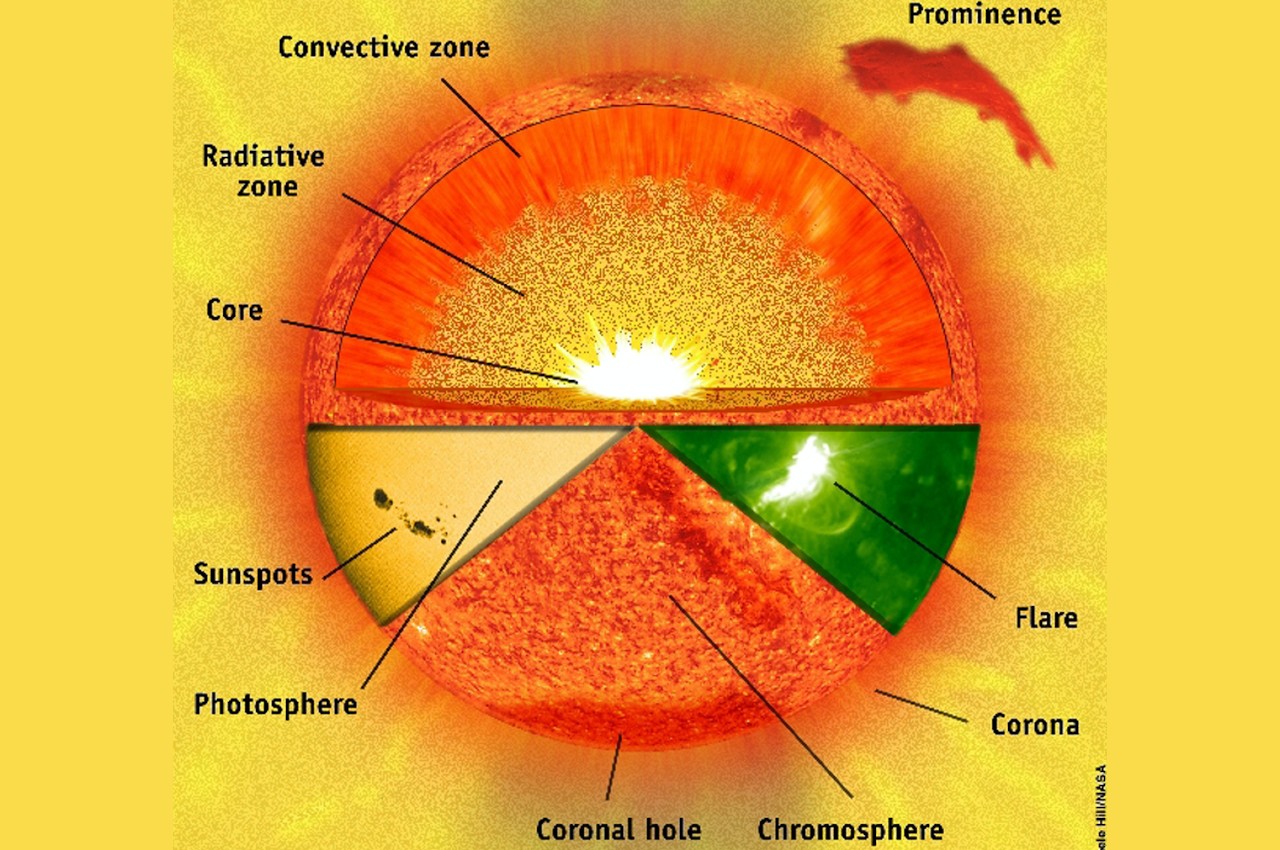What is the sun made of? (original) (raw)

(Image credit: NASA/SDO)
The sun is a big ball of gas and plasma, but what is the sun made of exactly? Most of the gas — around 92% — is hydrogen, according to NASA. It is converted into energy in the sun's core. The energy moves outward through the interior layers, into the sun's atmosphere, and is released into the solar system as heat and light.
Nuclear fusion
In the sun's core, gravitational forces create tremendous pressure and temperatures. The temperature of the sun in this layer is about 27 million degrees Fahrenheit (15 million degrees Celsius). Hydrogen atoms are compressed and fuse together, creating helium. This process is called nuclear fusion. As the gases heat up, atoms break apart into charged particles, turning the gas into plasma.
The energy, mostly in the form of gamma-ray photons and neutrinos, is carried into the radiative zone. Photons can bounce around at random in this zone from somewhere between a few thousand to about a million years before traveling to the surface, according to Sten Odenwald on NASA's Ask the Space Scientist page.
Why don't we know how long it takes for a photon to travel outward from the center of the sun? For one thing, scientists can't see into the core to track a photon from its birth. Instead, they must rely on models that follow the infamous "drunkard's walk" problem.
According to this scenario, the distance a drunken person travels while making random left and right turns is their typical step size times the square root of the number of steps taken. For a randomly traveling photon in the solar center, this depends on what is used for the mean free path (or average distance travel) of radiation. These numbers range from 4,000 years to millions of years, though most solar scientists tend to rely on 170,000 years, according to the book Welcome to the Universe: An Astrophysical Tour.

Four hydrogen nuclei combine to release a helium nucleus. (Image credit: Getty Images)
"Photons go on a random walk within the sun," space scientist Lucie Green, a professor at the University of California, Los Angeles, told Space.com. "I would say 170,000 years for photon to escape."
"Most astronomers are not too interested in this number and forgo trying to pin it down exactly because it does not impact any phenomena we measure with the exception of the properties of the core region right now," Odenwald said.
Scientists think the sun's magnetic field is generated by a magnetic dynamo in the radiative zone.
The convection zone (also known as the convective region) is the outermost layer of the sun's interior. It extends from about 125,000 miles (200,000 km) deep up to the visible surface or the sun's atmosphere, according to NASA. The temperature drops below 3.5 million degrees F (2 million degrees C) in the convective zone, where hot plasma bubbles up toward the surface.

This image shows the sun's three major zones (convective zone, radiative zone and core). (Image credit: ESA&NASA/SOHO)
The convective motions carry heat quite rapidly to the surface, which is the bottom layer of the sun's atmosphere, or photosphere. This is the layer where the energy is released as sunlight. The light passes through the outer layers of the sun's atmosphere — the chromosphere and the corona.
We usually can't see these layers, but during a total solar eclipse, the chromosphere looks like a red rim around the sun, and the corona forms a white crown with plasma streamers spreading outward. The chromosphere gets its red color from the abundance of hydrogen, according to the National Solar Observatory.
Abundance of elements
Astronomers who have studied the composition of the sun have catalogued 67 chemical elements in the sun. There may be more, but in amounts too small for instruments to detect. Here is a table of the 10 most common elements in the sun, according to NASA Goddard Space Flight Center:
Swipe to scroll horizontally
| Element | Abundance (pct.of total numberof atoms) | Abundance(pct. of total mass) |
|---|---|---|
| Hydrogen | 91.2 | 71.0 |
| Helium | 8.7 | 27.1 |
| Oxygen | 0.078 | 0.97 |
| Carbon | 0.043 | 0.40 |
| Nitrogen | 0.0088 | 0.096 |
| Silicon | 0.0045 | 0.099 |
| Magnesium | 0.0038 | 0.076 |
| Neon | 0.0035 | 0.058 |
| Iron | 0.030 | 0.014 |
| Sulfur | 0.015 | 0.040 |
Additional resources
For more information about the sun, read NASA Science's Solar System Exploration page. Additionally, you can find the answers to more questions about the sun at the Natural History Museum UK website.
Bibliography
"On the photon diffusion time scale for the sun". Astrophysical Journal, Part 1 (1992). https://adsabs.harvard.edu/full/1992ApJ...401..759M
"On the time scale of energy transport in the sun". Solar Physics (2003). https://www.researchgate.net/publication/226250698_On_the_time_scale_of_energy_transport_in_the_Sun
"The random walk of radiation from the sun". Walker, L. M. (2006). https://www.researchgate.net/publication/238080819_The_random_walk_of_radiation_from_the_sun
"Welcome to the universe: an astrophysical tour". Tyson, N. D., Strauss, M. A., & Gott, J. R. (2016). Princeton University Press. https://books.google.co.uk/books
Join our Space Forums to keep talking space on the latest missions, night sky and more! And if you have a news tip, correction or comment, let us know at: community@space.com.
Breaking space news, the latest updates on rocket launches, skywatching events and more!
Tim Sharp is the Reference Editor for Space.com. He manages articles that explain scientific concepts, describe natural phenomena and define technical terms. Previously, he was a Technology Editor at The New York Times and the Online Editor at the Des Moines Register. He was also a copy editor at several newspapers. Before joining Purch, Tim was a developmental editor at the Hazelden Foundation. He has a journalism degree from the University of Kansas. Follow Tim on Google+ and @therealtimsharp